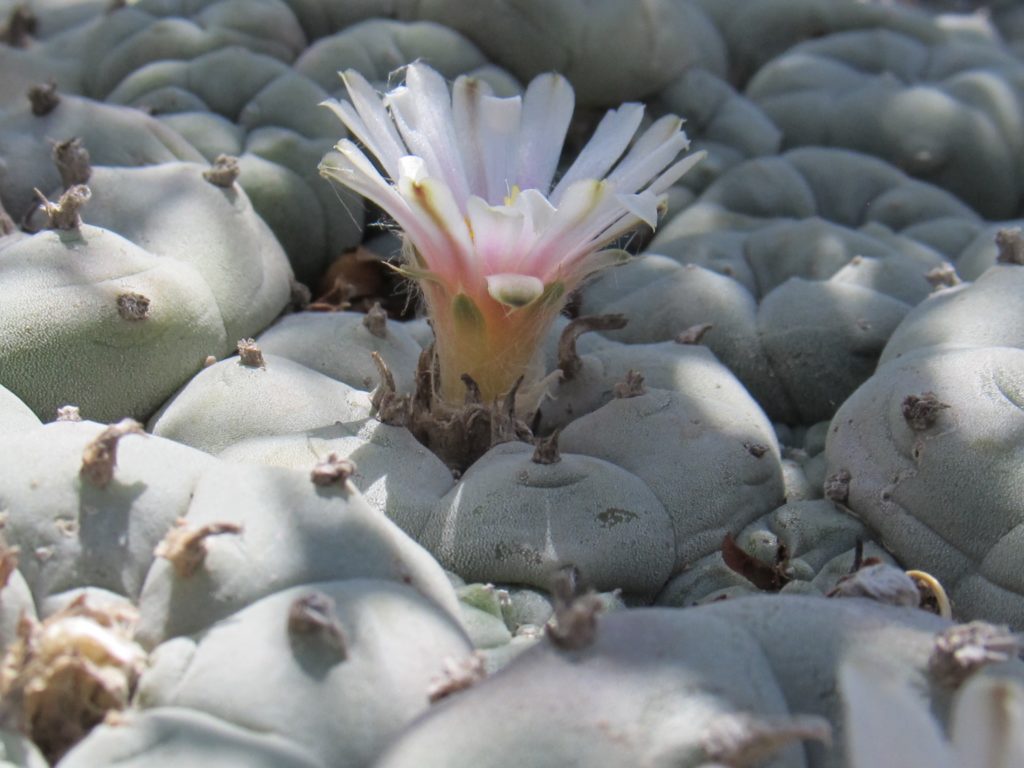What is Peyote?
According to the United States Drug Enforcement Administration (DEA), peyote is a small cactus plant without a spine, and it contains a hallucinogenic drug called mescaline. This drug has a history of use in religious ceremonies in Mexico and the Southwestern United States, but some also abuse the drug recreationally.1
Is it Addictive?
The DEA labels peyote as a Schedule I Controlled Substance, meaning it has no medical purposes, and people are highly likely to abuse it. Because it contains mescaline, peyote is a hallucinogenic substance. According to the National Institute on Drug Abuse (NIDA), hallucinogenic drugs have the potential to be addictive. There is also evidence that people may develop a tolerance to hallucinogens, meaning that after repeated use, they will need larger doses of the drug to achieve the same desired effects.2
Is it Safe?
Given its label as a Schedule I Controlled Substance, experts do not consider peyote to be a safe drug.1 According to scientists, the drug’s effects take place within a half-hour of use and reach a peak in about two hours, but some effects of the drug can persist for up to eight hours.3 After using peyote, people experience what is called a “trip,” in which they lose touch with reality. This means that for extended periods, they may be unaware of their surroundings and at risk of engaging in bizarre or dangerous behavior.
While peyote can lead to unsafe behaviors, a fatal overdose is fortunately rare. That being said, there have been cases of people dying after consuming larger doses. There have also been instances of people who abuse the drug developing a condition called botulism, which causes muscular weakness, after ingesting the drug.3 Death may be rare, but there are serious safety concerns associated with the use of this drug.
Street Names
According to the DEA, common street names for include:1
- Buttons
- Cactus
- Peyoto
Prevalence of Use
The Substance Abuse and Mental Health Services Administration (SAMHSA) has conducted research to determine just how widespread peyote abuse is. According to a 2016 report from this agency, 5.5 million Americans aged 12 and above have used peyote at some point during their lives. This represents 2 percent of the population aged 12 and older in the United States.4 In addition, the same report indicates that within a given year, 4.7 million people have used a hallucinogen, which is equal to 1.8 percent of the population. The average age at which people begin using hallucinogenic drugs is 19.6 years.4
How is it Used?
According to the DEA, people will make “buttons” out of the peyote cactus and either chew on them or soak them in water to create a liquid that leads to intoxication. Others will grind peyote, make it into a powder, and put it into capsules that are swallowed like a pill. It is also possible to mix it with tobacco or marijuana and smoke it.1
Effects of Peyote
Short-Term Effects
Peyote is known as a hallucinogenic drug, and its most noticeable effects are due to its hallucinogenic properties. According to NIDA, hallucinogenic drugs cause people to see, hear, and feel things that are not actually real. The hallucinogenic effects cause people to believe that these sights, sounds, and feelings are present. This process of experiencing sensations that are not real is called a “trip.” During a trip, you may feel especially relaxed or in touch with their spirituality.2
In some cases, a “bad trip,” is possible, which occurs when the drug’s effects are unpleasant. During such an experience, it’s possible to become paranoid or psychotic and engage in bizarre behavior.2
In addition to the risk of a bad trip, peyote can cause the following unwanted side effects:2
- Loss of appetite
- Sleep disturbances
- Excessive sweating
- Poor coordination
- Dry mouth
- High body temperature and blood pressure
- Nausea
- Elevated heart rate
During a trip, it may also seem as if time is moving more slowly than it is. Colors may also appear brighter than they are.2
Long-Term Effects
Over the short-term, peyote can cause trips and some unpleasant side effects, but there are also some long-term dangers associated with this drug. One such danger is the development of persistent psychosis, in which mental health problems, such as paranoia, disorganized thinking, and unstable moods develops.
A second long-term risk is hallucinogenic persisting perception disorder (HPPD), which causes a person to have flashbacks of instances in which he or she was tripping. This means they will re-experience previous trips without warning.2
Withdrawal
According to experts writing for Addiction Medicine, hallucinogens are not typically associated with any withdrawal symptoms. This means that when people stop taking peyote, it is not likely they will experience any uncomfortable physical symptoms.5 However, if long-term abuse of a hallucinogen has occurred, treatment to address possible underlying conditions may be helpful.
Treatment for Peyote Abuse
While people may not experience withdrawal when they stop using peyote, there are long-term risks associated with the use of this drug, such as mental health problems like psychosis and flashbacks. This means treatment may be required to address the effects of abuse. According to NIDA, there are not any medications currently approved to treat addiction to hallucinogens, but behavioral therapies are available to treat addiction.2 Those who are abusing peyote and having difficulty stopping should contact an addiction treatment professional for assistance. With behavioral and psychological treatment, you can address the underlying issues that contributed to the drug abuse and get the help needed to stop.
Resources
- https://www.dea.gov/sites/default/files/2020-06/Peyote%20and%20Mescaline-2020_0.pdf
- https://www.drugabuse.gov/publications/drugfacts/hallucinogens
- https://www.sciencedirect.com/topics/neuroscience/mescaline
- https://www.ncbi.nlm.nih.gov/books/NBK424847/table/appd.t10/
- https://link.springer.com/chapter/10.1007/978-1-4419-0338-9_54





